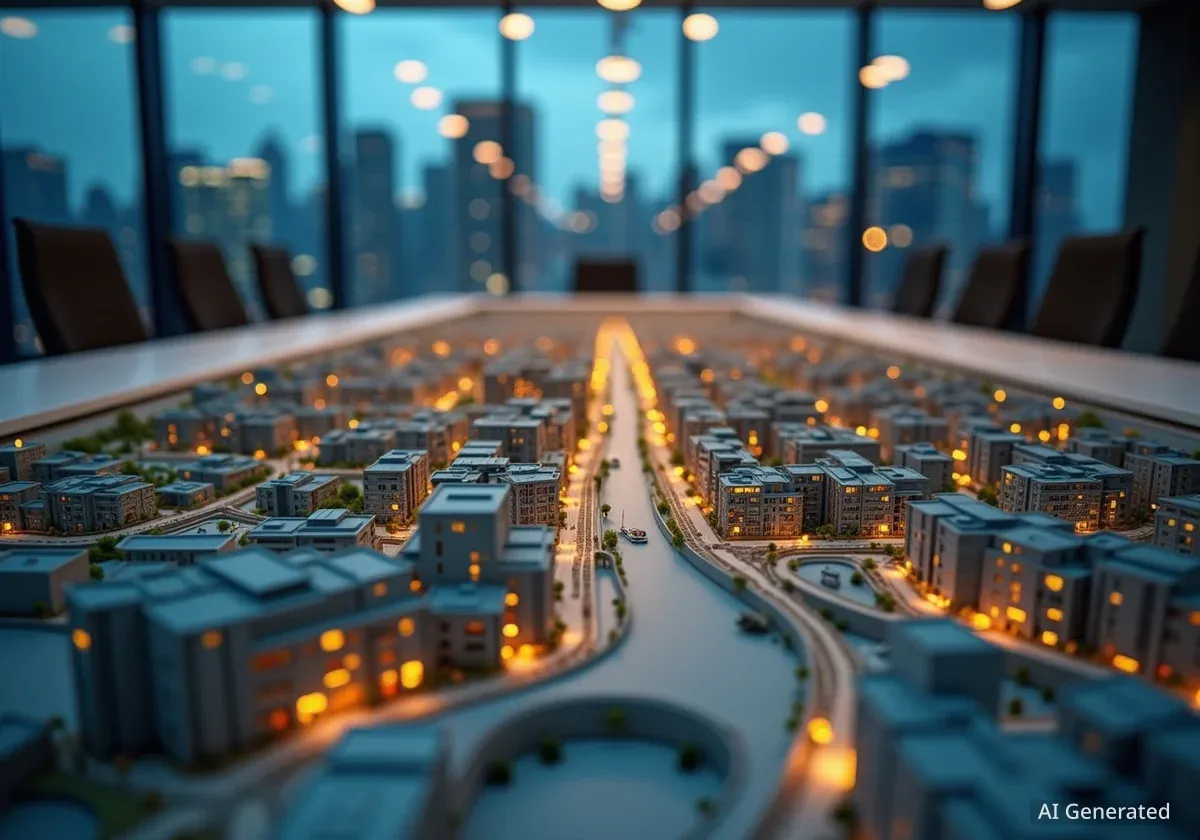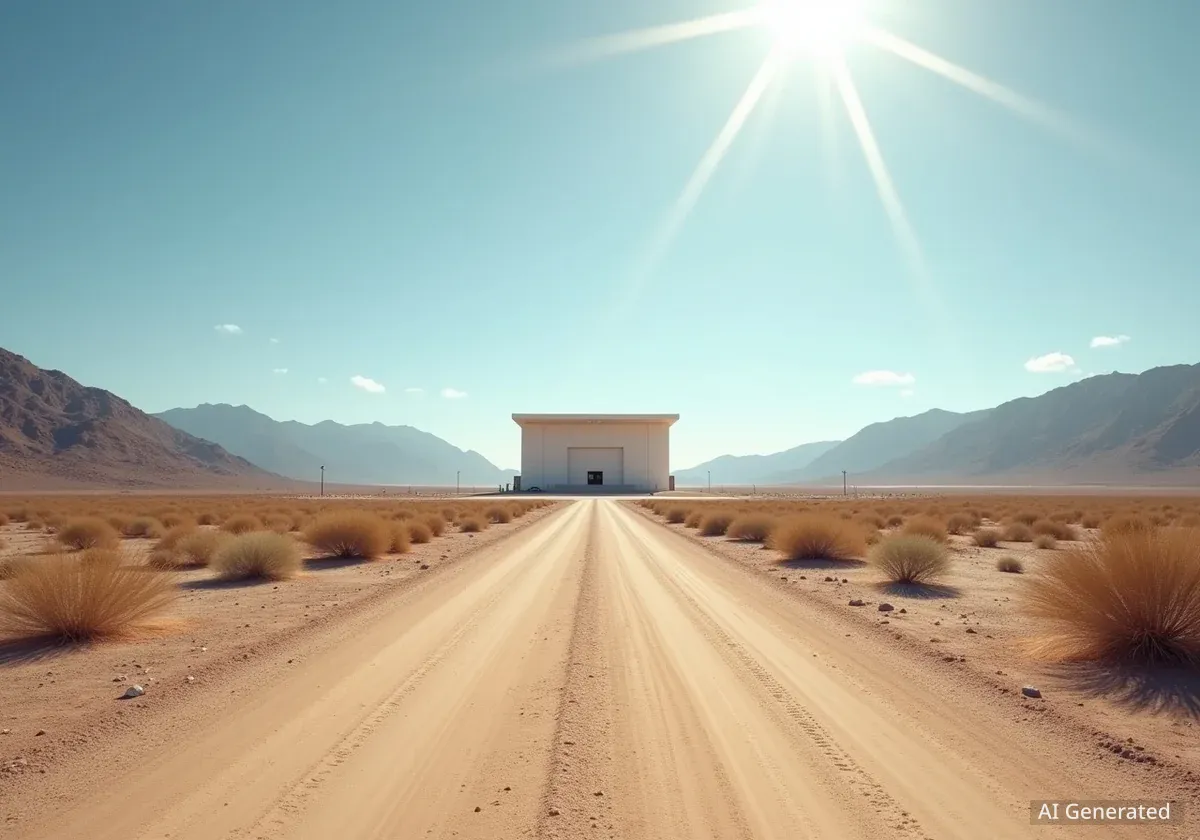Donald Trump's approach to international relations often mirrors the principles of a large-scale real estate project, treating geopolitical agreements as transactions designed to unlock economic value. This perspective reinterprets diplomacy not as a quest for ideological alignment but as a strategic process for developing underutilized assets, a model clearly demonstrated by the 2020 Abraham Accords.
Instead of focusing solely on political resolutions, this strategy emphasizes the creation of tangible, interconnected economic systems. The core idea is that shared infrastructure and mutual investment can build a more durable peace than agreements based on trust alone, effectively turning diplomatic handshakes into the foundation for new economic corridors.
Key Takeaways
- Donald Trump's diplomatic strategy is heavily influenced by his background in real estate development, viewing international agreements as business deals.
- The Abraham Accords are presented as a prime example of this model, prioritizing economic normalization and infrastructure links between Israel and several Arab nations.
- The approach follows a three-layer process: using diplomacy to gain access, building infrastructure to create interdependence, and securing the arrangement with long-term investment.
- Key figures like Jared Kushner and Steve Witkoff have been instrumental in translating this geopolitical vision into tangible infrastructure and investment deals.
- Critics suggest this method commodifies diplomacy, while supporters argue it builds a more resilient peace based on material, shared interests rather than fragile political promises.
Diplomacy as the Initial Transaction
In traditional foreign policy, peace treaties are often seen as the ultimate goal. However, within the framework of Trump's transactional diplomacy, a peace agreement is merely the first step—equivalent to securing a permit or changing a property's zoning classification. It serves to unlock the potential of a previously restricted or inactive region.
The Abraham Accords of 2020, which normalized relations between Israel, the United Arab Emirates, and Bahrain, perfectly illustrate this principle. While the public focus was on the historic political ceremonies, the underlying function was to open previously closed borders to trade, travel, and capital flow. These agreements effectively rezoned a significant portion of the Middle East from a conflict-prone area to a region ripe for development.
This initial diplomatic layer acts as the access key. It grants permission for businesses, financiers, and developers to begin mapping out new opportunities. According to this model, the political gesture is the gateway to the much larger project of economic and physical integration.
The Abraham Accords Context
Signed in September 2020, the Abraham Accords marked the first public normalization of relations between an Arab country and Israel since Jordan in 1994. The agreements, later joined by Sudan and Morocco, bypassed the long-stalled Israeli-Palestinian peace process, focusing instead on bilateral economic, security, and technological cooperation.
Infrastructure The Blueprint for Interdependence
Once diplomatic access is secured, the second layer of this strategy focuses on building physical and digital infrastructure. This phase is less about political dialogue and more about creating tangible connections that make a return to hostility economically impractical. Jared Kushner, a key architect of the Accords, has been central to executing this vision.
With a background that merges real estate and politics, Kushner views connectivity as a primary tool of diplomacy. His work, both in the White House and through his subsequent ventures like the Abraham Accords Institute for Peace and the investment fund Affinity Partners, has centered on translating treaties into concrete projects.
From Treaties to Tangible Links
The focus on infrastructure includes a wide range of assets:
- Transportation: Establishing direct flight routes between Tel Aviv, Dubai, and Manama, which were previously nonexistent.
- Energy: Exploring pipelines and renewable energy partnerships to connect regional power grids.
- Digital Connectivity: Laying fiber optic cables to create high-speed data corridors, linking Israel's tech sector with Gulf financial hubs.
- Trade Corridors: Creating free-trade zones and streamlining logistics to facilitate the movement of goods through regional ports.
In this view, a new shipping route or a shared data center becomes as crucial to stability as an embassy. When the economies of nations become physically intertwined through shared infrastructure, their interests naturally align. The UAE's role as a global logistics hub combined with Israel's innovation ecosystem creates a synergy built on fiber optics and trade routes, forming a network that is materially difficult to break.
Investment The Foundation for Permanence
The third and final layer of the model is investment, which serves to anchor the diplomatic and infrastructural gains. This phase transforms the concept of peace from a political ideal into a tangible asset class that attracts capital and generates measurable returns. Long-time Trump ally and real estate developer Steve Witkoff is a key example of the mindset driving this layer.
For developers like Witkoff, buildings and large-scale projects are not just static structures; they are instruments of economic and geopolitical influence. They anchor capital in a region, attract international talent, and project a sense of stability and soft power. This thinking has become a central part of the regional strategy.
"Peace dividends are no longer metaphorical; they are measurable in square meters, fiber kilometers, and megawatts," writes Dr. Bella Barda Bareket, a global trends analyst, in her analysis of the strategy.
Under this framework, American, Israeli, and Gulf-based investment funds are increasingly co-investing in strategic assets across the region. Affinity Partners, backed by significant capital from Gulf sovereign wealth funds, is a primary vehicle for this strategy. These joint ventures in ports, renewable energy projects, and technology hubs create a powerful feedback loop: diplomatic stability attracts investment, and that investment, in turn, provides a strong economic incentive to maintain stability.
This creates a form of deterrence that is not military but material. When nations share ownership of critical assets, the cost of conflict rises exponentially for all parties involved.
A New Model for Peacemaking
This layered approach—diplomacy for access, infrastructure for interdependence, and investment for permanence—represents a significant departure from 20th-century peacemaking. Past agreements often relied on mutual restraint, third-party security guarantees, and shared ideologies. In contrast, this 21st-century model is built on shared logistics and mutual economic benefit.
Critics argue that this transactional approach reduces complex geopolitical issues to mere business deals, potentially overlooking critical human rights concerns or long-standing political grievances like the Israeli-Palestinian conflict. They suggest it commodifies the very notion of peace, turning statesmanship into a series of real estate transactions.
However, proponents contend that this model recognizes the material foundations of modern stability. History has shown that agreements are most durable not when leaders simply trust one another, but when their nations are too economically and physically integrated to risk a breakdown in relations. By redefining diplomacy as a form of strategic development, this approach aims to build a peace that is literally constructed from the ground up—one that is more likely to endure because it exists not just on paper, but in the ports, pipelines, and data centers that connect the region.





